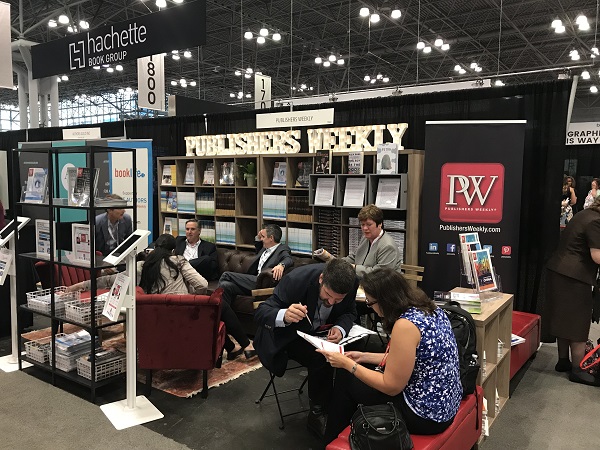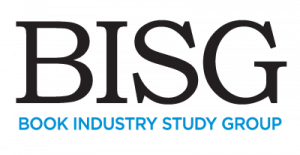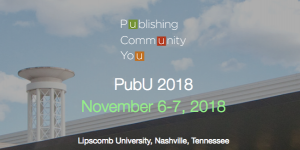With London Book Fair around the corner, here at NetGalley we’re gearing up for weeks of plane travel, convention centers, and branded pens. Conference season is a crucial time for us to see our clients across the country, to check in about their needs, and to continue building the kinds of rich personal relationships that make this industry vibrant.
In order to make the most out of any conference, it’s best to arrive with a plan. Here’s how we’re planning on getting the most out of conference season.

Photo credit: LondonBookFair.co.uk
Identify your goals
What is it that you want to get out of a conference? Make your goals clear before you arrive, whether just to yourself or with your team. Then, with that in mind, you can plan how to best spend your time. Are you hoping to get an overall sense of industry trends at one of the big trade shows? Make sure to spend some time wandering through the booths to see what patterns you notice. Are you hoping to forge new connections? Make sure to take advantage of sponsored networking opportunities. If you are more junior at your company, use an event to demonstrate your value to your colleagues and learn more about the industry by offering to take notes in client meetings or by writing a conference recap for your team. Conferences can be overwhelming, but if you go in clear about what you are hoping to get out of the experience, you’ll be able to create some structure for yourself.
Set realistic expectations
It’s unlikely for an indie author to land a whirlwind movie deal for their debut novel at London Book Fair (although it does sound like a meet-cute in a book we’d probably read). London Book Fair has around 25,000 attendees every year, which is quite a crowd. If you hope to land your big break at a professional conference, you will likely end up disappointed. Instead, focus on smaller and more attainable goals, while remaining flexible enough for surprises. Consider each conference as a chance to grow your professional network by meeting new people who you will keep in touch with over the coming months and deepening your relationships with colleagues across the industry. Remember to do your research ahead of time, too–understanding the audience attending or exhibiting at each conference, and what the main focus of the event is goes a long way toward setting your own expectations and goals.
Go to the seminars and lectures
Take advantage of all the experts giving advice and talking about industry trends. Take a look at the schedule before you arrive at the conference to see which talks you’ll definitely want to attend, and schedule your other meetings around them. Seminars and lectures are perfect opportunities to get inspired by how other folks in publishing are handling the challenges of the industry in new and creative ways. Then, once you’re in the room with colleagues in your field, introduce yourself to the lecturers who you’d like to connect with and say hello to audience members who asked questions relevant to your work. Targeted seminars are great places to forge connections with people who might be working on similar projects. Last year at London Book Fair, there were over 220 programs to attend. This year looks to be just as jam-packed. There’s sure to be something tailored to your specific needs at any of the larger industry gatherings.

Photo credit: Bookweb.org
Put faces to names
One of the most important benefits of conferences, especially the huge ones, is that everyone will be there. Use these opportunities to meet people who you only communicate with via email or phone in person. A few weeks before the conference, start asking your colleagues and clients if they’ll be attending, and find the time to get together either for a formal meeting or a casual catch-up. And, even if they won’t be attending, they’ll certainly appreciate being asked. In-person meetings are one of the most important ways to strengthen your professional relationships.
Follow up
You’ll likely leave any professional conference with a stack of business cards. Rather than letting them wither in a filing cabinet, send a quick email introduction after the conference. That way, you’ll still be fresh in each other’s memory, and now you’ve established some digital communication.
Record your impressions
When you’re on the conference floor or talking with colleagues, your mind is likely to be buzzing with new ideas or busy making connections between different aspects of the industry. We recommend writing down these thoughts while you’re still at the conference, or very quickly thereafter. When you return to your regular daily activities, you’ll be able to refer to the inspiration you felt or the trends you saw when you need to zoom out and look at the big picture of your work. It’s worthwhile to revisit these notes throughout the year, too! You may have learned something new since then that casts those earlier experiences in a new light.
Plan your 2020 budgets
After you return from your conferences, keep track of which events were the best fits for your previously-established goals. Which ones were most worth your while and which ones did you go to purely out of habit? Then, when you are planning how best to allocate your budget for next year, you’ll have documentation to refer back to when deciding whether to budget in those same conferences next year.
We’re packing our bags for the next few weeks on the road. Stay tuned for our recaps from some of the conferences we’ll be attending. See you at the convention centers!




